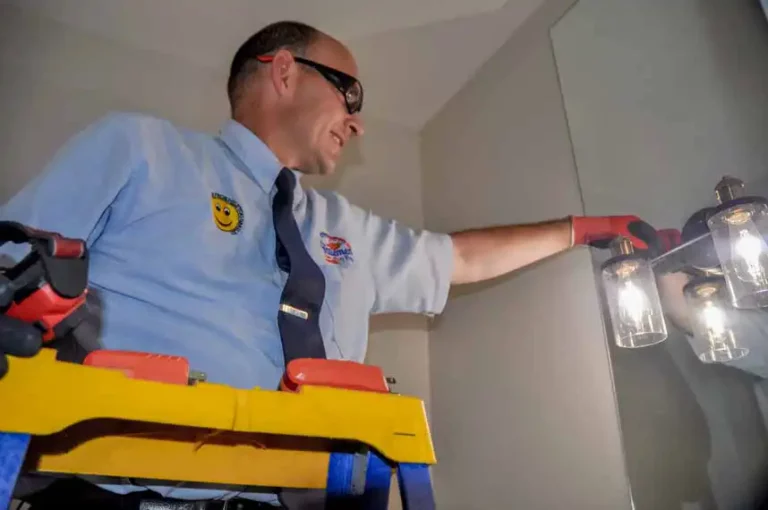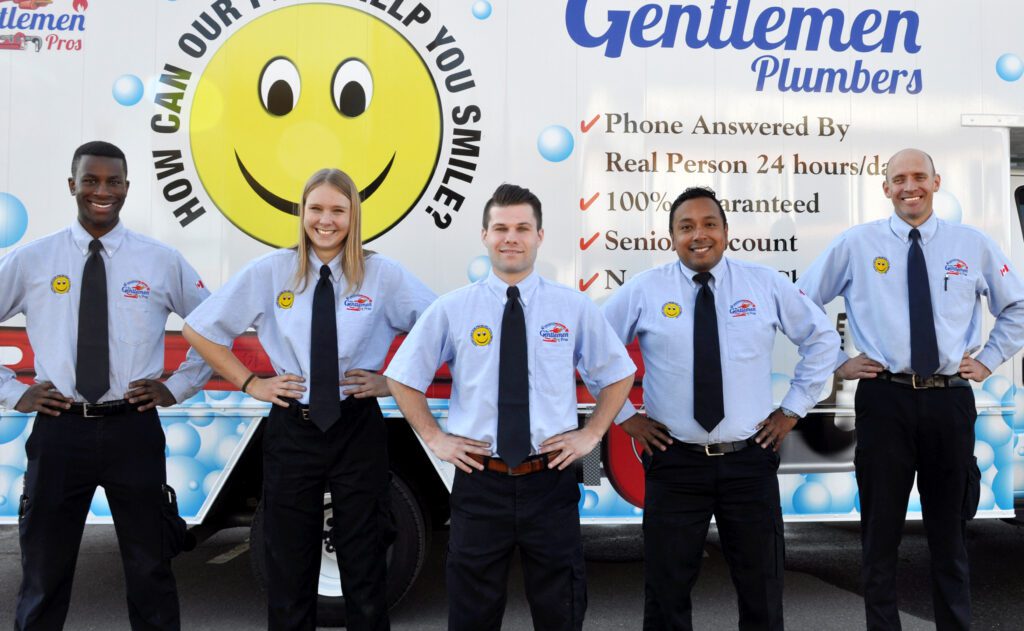
Same Day Service
Since 2001
Call The Gentleman Pros Now!
(403) 879-1759

Protect your family with professionally installed carbon monoxide detectors.

Carbon monoxide is a gas that is almost impossible to detect without a carbon monoxide detector. It has almost no smell and it is colourless and tasteless. When you combine this with the serious effects of carbon monoxide poisoning which range from headaches to shortness of breath to coma and even death, you can see why it is so important to have carbon monoxide detectors in your home.
The most dependable detectors are hard-wired right into your electrical system. Just like your lighting fixtures, the detector’s wires are connected directly to the wiring in your house. You’ll never have to worry about dead batteries rendering your detector useless and putting you and your family at risk.
Our electricians know all the regulations and best practices relating to carbon monoxide detectors. Couple this knowledge with their excellent skills and you can be secure in the knowledge your detectors are professionally installed and your family is safe.
Let’s keep your loved ones safe, call us at (403) 879-1759 and get your carbon monoxide detectors installed by the experts. Don’t want to make a phone call, talk with us through our chat function by clicking on the Chat With Us icon at the bottom right-hand side of the page or you can fill out our online form.
There is not a straightforward answer to this question. The answer is – it depends. Each person is different and the effects of carbon monoxide are dependent on the concentration of the carbon monoxide, the length of exposure, and the health of the person exposed.
On average, mild symptoms start when the carbon monoxide concentration is at 70 parts per million (ppm).
Carbon monoxide detectors use a sensor to detect carbon monoxide. When the detector senses a specific amount of carbon monoxide over a certain period of time it sets off an alarm.
There are three different types of carbon monoxide detectors each using a different type of sensor.
These carbon monoxide detectors have small electrodes submerged in a chemical solution that conducts electricity. When exposed to carbon monoxide there is a change in the electrical currents in the solution. The change in electrical currents triggers an alarm.
The biomimetic technology in carbon monoxide detectors mimics the effect carbon monoxide has on the hemoglobin in our blood. When these detectors are exposed to carbon monoxide the carbon monoxide is absorbed by a gel and the gel changes colour. A sensor detects the colour change and sounds the alarm.
The semiconductors in these detectors have silica in them. Silica is a mineral which is sensitive to carbon monoxide. When these semiconductors find the presence of carbon monoxide, they reduce the amount of electrical current flowing through the detector which sets off the alarm.
Carbon monoxide detectors are powered in one of three ways:
First things first. Never ignore a carbon monoxide alarm and do not panic.
Then evacuate the building with your family and pets and get into fresh air. Once you have evacuated the building, call 911 to report the incident. Let 911 know if anyone is experiencing symptoms of carbon monoxide poisoning.
If you cannot exit the building, open all the windows and doors you can. Get as close as possible to an open window or door and the fresh air entering through it. Call 911 and then turn off all the possible sources of carbon monoxide.
Do not reenter the house unless you are given the “all clear” by emergency responders, even if the alarm stops. Also, have the first responders check for the source of the carbon monoxide.
Carbon monoxide detectors should be tested regularly. Please check your detectors’ user guides for how often and how to test them.
Many detectors have a test button. Pressing it will let you know if the detector’s alarm is working. The user guides should outline what your detectors’ alarm test sequence should sound like.
The alarm test will not tell you if the detector is accurately sensing carbon monoxide.
There are test kits available to determine if your detector is accurately detecting carbon monoxide. The test kits contain a canister of carbon monoxide so you can safely expose the detector to the gas and see if it responds appropriately.
Yes, you should keep your detectors free from dust and debris using a soft cloth. Please check your detector manufacturer’s user guides for more in-depth instructions on how to keep your detectors clean.
Please check your user guides for how often you should change the batteries. At the very least, you should change your carbon monoxide detector batteries every six months. They are very important pieces of safety equipment and you don’t ever want the batteries going dead.
Carbon monoxide detectors do not last forever. On average, you should replace your detectors every five to seven years. Please refer to the user manuals to find the lifetime of your detectors.
Most detectors have an end-of-life alert. This is important to know in case your carbon monoxide detector doesn’t last five to seven years. Please check the user manual.



